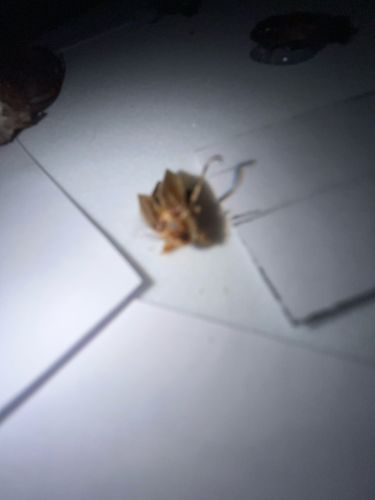Cockroach (likely American or Oriental Cockroach)
Scientific Name: Periplaneta americana (American), Blatta orientalis (Oriental) or similar Blattidae species
Order & Family: Blattodea, Blattidae
Size: 2.5 to 5 cm (1 to 2 inches) for adults, depending on species.

Natural Habitat
Warm, humid, and dark environments, often found indoors in kitchens, bathrooms, basements, drains, and sewers, as well as outdoors in leaf litter and under debris.
Diet & Feeding
Omnivorous scavengers. They eat almost anything, including food scraps, decaying organic matter, paper, books, starches, sweets, grease, and even other insects.
Behavior Patterns
Nocturnal, hiding during the day and becoming active at night to forage for food and water. They are fast runners and can exhibit thigmotaxis (preference for tight spaces). They reproduce rapidly.
Risks & Benefits
Potential risks include spreading pathogens (bacteria, viruses, fungi, protozoa) that can cause food poisoning, dysentery, allergies, and asthma. Their presence can contaminate food and surfaces. They offer little direct benefit to humans, though they play a role in decomposition in natural ecosystems.
Identified on: 9/22/2025